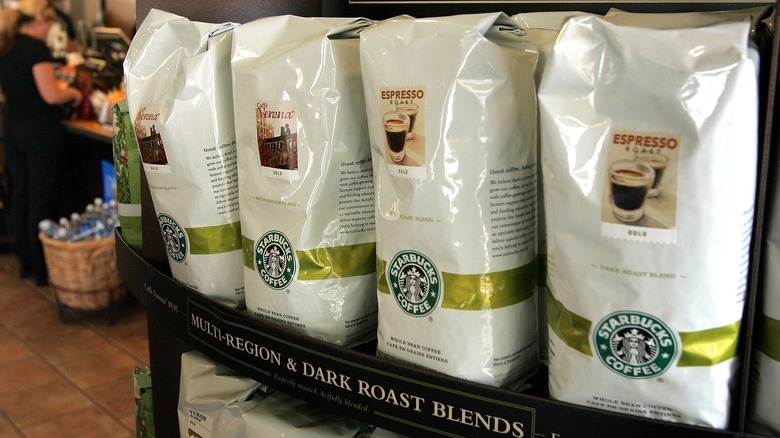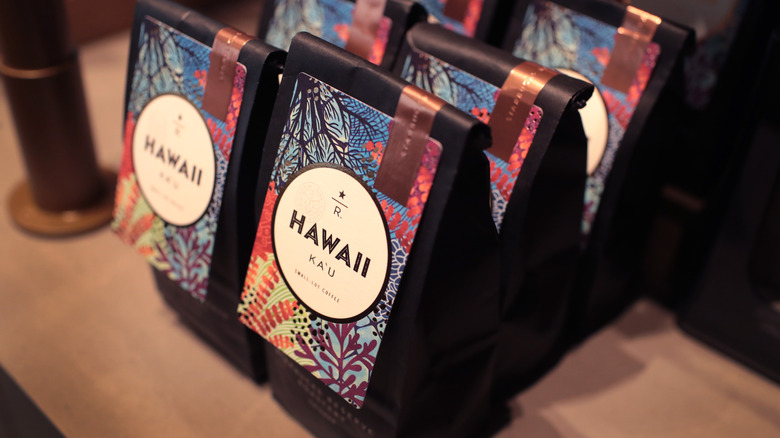How Starbucks' Packaging Keeps Its Coffee Beans Fresh For So Long
If you're a coffee aficionado, you know that keeping your coffee beans fresh is an essential part of brewing a delicious cup. And considering that a bag of ethical coffee typically costs between $15 to $25, you'll want to get the most bang for your buck by keeping your beans fresh for as long as possible. Once the beans start to go stale, your coffee will most likely start tasting bitter and sour, which isn't ideal. This happens because the solubles in coffee beans start oxidizing as soon as they're exposed to air, causing their smell to change along with their taste.
Back in the day, this was quite a problem. In 1700s France, coffee was packaged in bags made from greased leather or treated with beeswax to create a seal — and while this may have worked well enough at the time, we're not sure those materials yielded the best-tasting beans. At the end of the 18th century, jute bags made from burlap took over. Although these are still used today for mass quantities of beans, most individuals aren't buying enough beans that they want to take home a big burlap sack full of them.
Luckily, Starbucks found a way to package coffee that allows average consumers to take home smaller amounts of beans and keep them fresh for a good long time.
Starbucks uses FlavorLock technology
In 1989, Starbucks found a way to package its coffee beans in small quantities while maintaining a fresh flavor for up to 34 weeks. The chain began implementing FlavorLock technology on its bags, which it had already been using since the early 1980s for its wholesale customers. Not only was this beneficial for consumers, but it also meant that Starbucks could ship its roasted coffee beans from its roasting plants to stores all around the world.
So how exactly do FlavorLock bags keep coffee beans fresh? They include a one-way valve that keeps oxygen out but allows carbon dioxide to escape. This is a crucial consideration, since after coffee beans are roasted, they can produce a lot of carbon dioxide while browning — leading to pressure building up in a container. Coffee bags need a way to degas, although the Starbucks FlavorLock bags weren't the first to do it; back in the 1960s, the one-way degassing valve was invented by an Italian company called Goglio.
Nevertheless, Starbucks adopted the technology and began sealing its beans in FlavorLock bags within two hours of roasting, minimizing oxygen exposure. In 2007, former Starbucks CEO Howard Schultz was skeptical of the transition, stating in an email that he felt the bags led to a "loss of [coffee] aroma" in stores. However, customers can still buy Starbucks coffee bean bags sealed with FlavorLock technology today.

